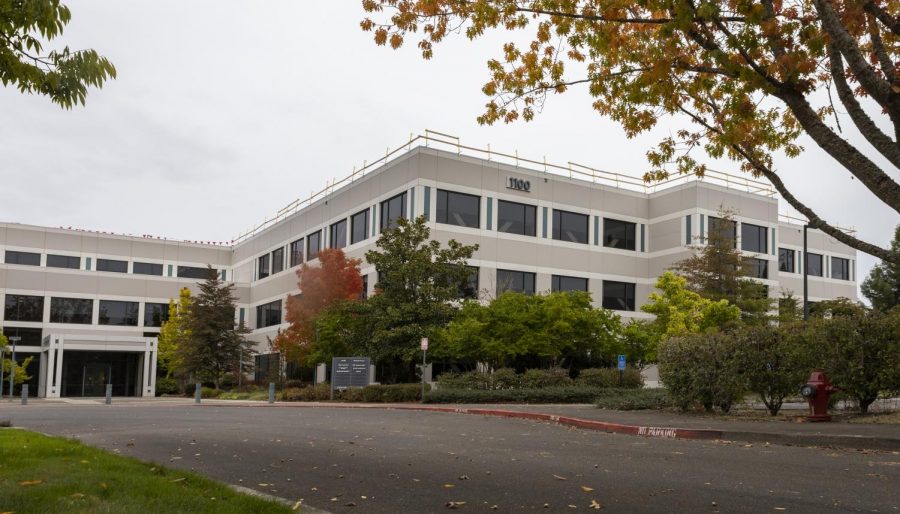Malick: The sale of Inpria shows what Beavers can do
October 21, 2021
Editor’s Note: This column does not represent the opinion of The Daily Barometer. This column reflects the personal opinions of the writer.
A Corvallis-based tech company named Inpria sold for $514 million to JSR, a Japanese semiconductor material company, on Sept. 17, adding Inpria to the global supply chain.
Inpria was founded based on research done in Oregon State University’s chemistry department in 2007.
Inpria produces an innovative metal oxide photoresist, which is an inorganic photoreactive film that is used in the production of microprocessor chips. Modern Central Processing Units, or CPUs, are contained on these microprocessor chips. The CPU is the brain of the computer. These chips are made using a process called extreme ultraviolet lithography, which is shortened as EUV.
The smaller the channels on these microprocessors, the faster data can be processed. Traditional lithography uses a laser to etch channels into microprocessor chips. The wavelength of this traditional laser is 193 nanometers. For comparison, a human hair is approximately 80,000 to 100,000 nanometers wide. EUV, which is not visible to the human eye, has a wavelength of 13.5 nanometers.
The metal oxide photoresist Inpria produces is used to create channels on microprocessors. The photoresist is laid down on the blank wafer, then EUV strikes it in certain locations. This changes the chemistry of the film in the regions of exposure and binds it to the wafer, creating the channels on the microprocessor. Next the unexposed film is washed away and comes off the wafer.
This photoresist is critical for the next generation of photolithography.
“The previous technologies were all based on polymers,” said Dr. Doug Keszler, distinguished professor of chemistry at OSU. “So about forty years or more of polymer technology had been photoresist. The metal oxides really couple well to the EUV because it gets faster lighting and smaller features written at a higher fidelity.”
Keszler worked with Jeremy Anderson, Jason Stowers, Peter Hersh and Stephen Meyers in 2007 to create the photoresist.
“We had fundamental scientific questions around how small we could pattern inorganic materials,” said Keszler. “After we did the initial study and demonstrated capability, it started to become obvious that it had potential.”
While EUV technology is still expensive, breakthroughs like Inpria’s metal oxide photoresist will allow for better, faster manufacturing of microprocessor chips. For many of us, this means that we will eventually see the price of CPUs and drop. We’ll also see faster phones and computers.
“I don’t know how long before it will actually be in a commercial production line, but I don’t think it will be too long,” said Dr. Dave Dickson, intellectual property and licensing manager with OSU Advantage.
The OSU Advantage team offers resources that support innovation and entrepreneurship, supports the development of high-growth companies and provides access to development opportunities with advanced technologies and manufacturing, among other services.
The intellectual property of the photoresist is what Inpria was founded on. OSU co-owns this intellectual property and is a minority shareholder in Inpria, according to Dickson.
Even though Inpria has been sold, OSU will maintain its partial ownership of the patent and will maintain its position as a shareholder. In addition, JSR intends for Inpria to continue to be based out of the Hewlett Packard campus here in Corvallis, which harbors OSU’s Advanced Technology and Manufacturing Institute.
“As time goes on, the company has developed quite a substantial portfolio of its own intellectual property, which has actually evolved a fair bit from the original kernel that was started at OSU—which is great!” Dickson said. “That’s actually what we want to happen. We want the company to get started on this initial kernel coming out of the university and then build upon it and build their own value. They’ve definitely done that.”
Inpria’s success not only highlights the hard work and innovative spirit of the people who worked with Keszler in 2007 but also shows the potential of the OSU community.
Dickson also wants to encourage more undergraduate students to reach out to their professors.
“I [would] just love for this kind of activity to get more visibility with the undergraduate population because the undergrads are a huge resource of innovation and they should just know that this kind of stuff happens around here,” he said. “This is just one example of many to illustrate the vibrant innovation ecosystem we’ve got going on here.”











































































































